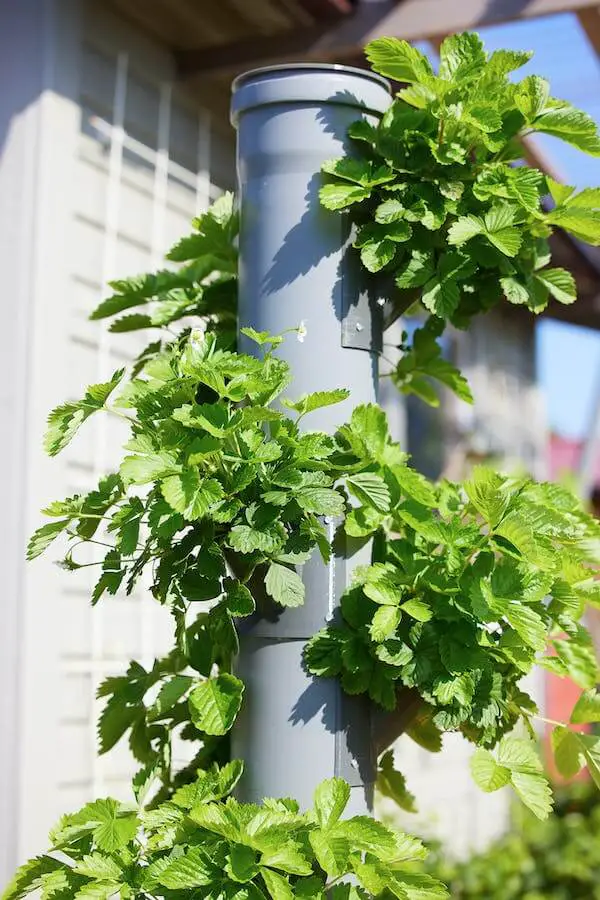Are you planning to set up an outdoor hydroponic system for your herbs? You are on the right track. But you need to start right. The best thing about this gardening method is the easy control of weeds, diseases, pests, and other environmental factors that affect herb gardening. Also, this system does not require much space, and the benefits are much more than any other growing medium for herb gardening.
For bounty herbs through hydroponics, you must know the dos and don’ts. That way, you set it right. The outdoor hydroponic system includes flood and drain, aeroponics, drips, wick, deep water system, and nutrient film techniques. The above systems require an intensive work plan than the traditional growing. But before that, what is hydroponic growing, and what are its benefits? Find below.
Hydroponic Growing

The hydroponic technique involves growing plants in a water-based solution that contains all the nutritional requirements. It differs from the traditional growing that involves soil as the main medium. You can use the production system for small or commercial herb gardening. Some people use the technique as a hobby.
Benefits Of Hydroponic Growing
Loads of benefits come with an outdoor hydroponic system;
- Fast Herb Growth
When you grow herbs in an outdoor hydroponic system, they have a faster growth rate than those growing in soil. The growth rate ranges between 25% and 50% faster than growing in the traditional soil.
- Higher Yields
If you are setting up a hydroponic herb garden, expect higher yields. The systems maximize water and nutrients, which are essential for herb production. The higher the nutritive intakes, the bigger the yields.
- Less Weather Impact
Hydroponics set-up includes controlled indoor/outdoor growing. And with this growing type, your crop does not depend on the weather conditions. Your herbs will thrive and produce a bounty harvest if you provide the right environment.
- Great Aroma And Taste
Herbs that grow in hydroponic systems have a great and fresh aroma. The quality is higher than herbs that grow in soil. Reasons? Controlled nutrition!
- Less Mess
Soil is messy to clean up, especially in indoor/outdoor farming. If you would like to utilize your balcony, consider hydroponics. The systems are less messy and easy to clean up.
- Fewer Costs
Setting the hydroponic planter, kit, and other machines has more cost implications than getting started in your garden. But overall, it can be cheaper to save money as you need less water, manual work, insect/disease control, and fertilizers than growing in soil. Also, the yield is better than soil gardening.
Disadvantages Of Hydroponics
It would be unfair to leave you with only the benefits of hydroponics. The systems have their drawbacks;
- Costly to set up.
- Require expert handling.
- The system relies on electric power, thus high running costs.
- Hydroponics have a high risk of waterborne diseases and pests.
- Risk of overwatering your plants.
- The produce lacks organic labels.
- High maintenance and replacement cost of the equipment.
Setting The Outdoor Hydroponic System

Setting the hydroponic system requires you first to know the type of technique you will use. There are several options in the market. Your choice depends on several factors, including pre-made vs. unassembled systems, cost, and scale (large or small). Here are the most popular hydroponics systems.
1. Ebb And Flow Hydroponics System
This hydroponics technique is also popular as the Flood and Drain technique. It uses a tray to hold water and the growing media. Once you plant your herbs in the media, their roots drop into the water and hang there. The system has a pump to supply your herbs with water and nutrients per the requirements. This system uses a timer to control the water in and out of the tray and as the plants require.
2. Nutrient Film Technique or NFT
This hydroponic technique involves thin water film flowing over the plant through a PVC piping. The pipe has perforations to let the nutrient-laced water flow. You will plant your herbs in crisper pots fitted into the piping system; with such a system, water and air flow constantly over the roots. If you consider NFT, learn about the best practices so as not to overwater or overfeed your herbs, which is also harmful.
3. Aeroponics
Another outdoor hydroponic system involves suspending plants in the air and misting the roots with nutrient-rich water. It is known as aeroponics and is a great system to grow many plants in a restricted area. This technique will work best if you are considering producing large-scale herbs.
4. Drip Hydroponics
Are you growing herbs outdoors? Consider the drip hydroponic technique. The system utilizes a tiny drip line that supplies nutrient-rich water into the rods. This technique saves you a lot of water. Also, you cannot overwater your herbs as the water flow is controlled.
5. Hydroponic Wick System
Agronomists find the wick technique ideal for armatures in herb gardening. It is the simplest as it involves supplying your plants with nutrient-rich water through a cotton wick. Once you place your herbs in a pot, insert the wick into the growing medium and contact it with water. The cotton wick will absorb the water and deliver it to the roots. With this method, your plants are not at the risk of overfeeding or overwatering.
6. Deep Water Culture Hydroponic Technique
Lastly, we have the deep water hydroponic technique. As it sounds, the method is close to the Flood and Drain/ Ebb and Flow hydroponic technique. The major difference is that with this method, plants stay in aerated water rather than growing media or soil. The deepwater hydroponic technique comes with air stones for oxygen circulation. So, it is more costly to install the equipment than the flood and drain.
Selecting The Right Outdoor Hydroponics System

You are ready to embark on outdoor hydroponic system gardening. Your goal is a bounty and quality harvest in all seasons. The first thing before the set-up is to select the right technique. It will require you to take several steps to conclude what suits your needs. Remember, the above methods have pros and cons, so do not overlook those. Now that you have up to six options to consider, check the steps here;
Step 1: Decide What Herbs You To Grow
Although all the hydroponic techniques are great for growing many plants, including herbs, some can thrive better than others. You need to pick herbs that can grow happily in these systems. For instance, creeping herbs may not be great for hydroponics. Hydroponics will be the wrong choice if you consider growing herbs with bulbs and those with invasive roots.
Step 2: Space
After deciding the type of herbs to grow, next is space. How much space do you have for this operation? You can grow for commercial purposes with an extensive area with the right budget. A space like your apartment terrace requires choosing a simple technique that doesn’t consume space.
Step 3: Decide Whether The Size Of Your Garden
What is the size of your project? Are you growing herbs for home consumption or commercial? The answer will map out where to start. The size of your investment dictates the technique to use. For instance, a home herb garden does not require a Deep Water culture hydroponic technique. A simple food and drain, drip, or wick system can be great for your vertical herb gardening.
Step 4: Decide Your Budget
Setting up a hydroponic system can be cheap or costly, depending on the system type. Also, the garden size determines if you will spend a few hundred dollars or several thousand. Set a budget and select a system that suits your pocket.
Step 5: Decide On The Machinery
Do you need an automated or manual set-up? There are complex systems with lights, timers, coolers, pumps, and alerts. Others require you to be available and operate them. The more complex the system, the more the set-up, maintenance, and operation cost. A more significant benefit of automation is efficiency and less tiresome operations. Manual techniques are not costly but require close attention.
Step 6: Novice Or Veteran
Is it your first time to do an outdoor hydroponic system? Start small. Hydroponics require time, maintenance, and more keenness. Do not go for complex techniques that require expertise throughout the growing season. It will be too costly for you. Install a system you can handle alone by applying the hydroponics DIY processes. Growing herbs hydroponically is a learning experience.
Conclusion
An outdoor hydroponic system is not rocket science. Starting right ensures you select the best system that suits your needs. You now have the most popular techniques. With this knowledge, you are on the right track to setting up a hydroponic garden and growing healthy and vibrant herbs.

